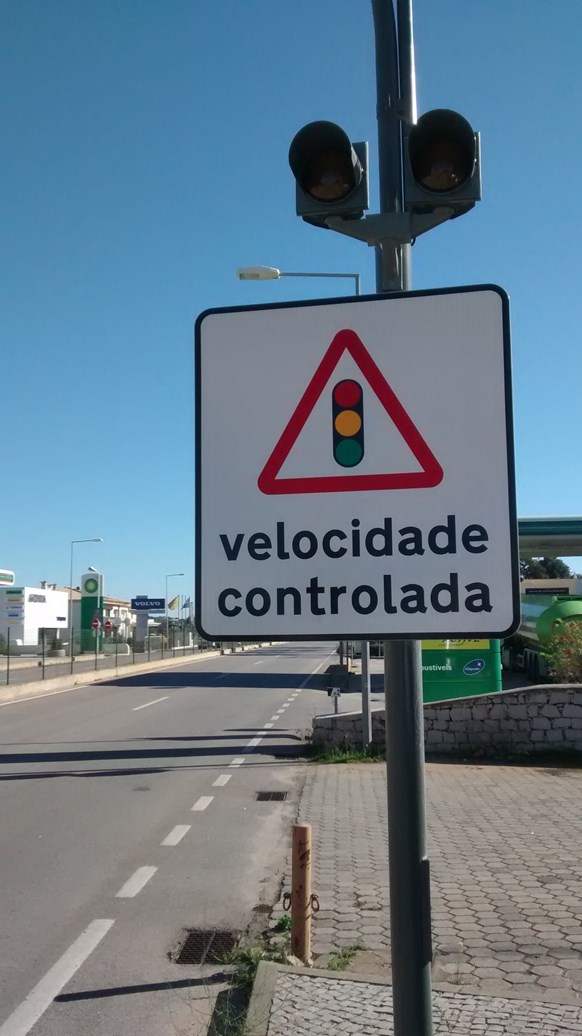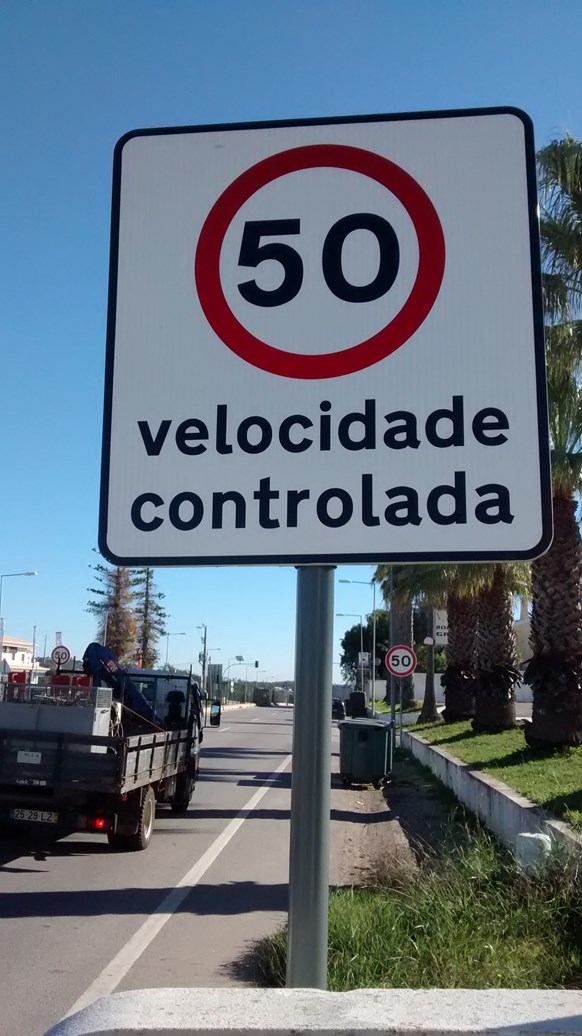Speed limits in Portugal (in km/h)
Cars: Urban areas 50 km/h (may be 20 or 30 km/h); motorways 120 km/h; other areas 90 km/h (may be 100 km/h). Details below.
Coexist
Zones
Other
Urban
Areas
Motorways
Reserved
Cars &
Motorcycles
Other
Roads
& mixed services)
with no trailer
with trailer
with no trailer
with trailer
with no trailer
with trailer
with no trailer or
with semi-trailer
with trailer
without registration
with registration
No sidecar
with sidecar
or trailer
(A) Coexistence zones: A category of urban area "specially designed for shared use by vehicles and pedestrians". Example: A road close to a beach where 1) people - especially children - are likely to cross the road without using designated pedestrian crossings or 2) there may be little or no kerb marking the boundary between road and pavement. These coexistence zones have a driving speed limit of 20 km/h for all traffic, and you should see a sign for that. Most pedestrian crossings have a 30 km/h limit sign. In a coexistence zone that limit is irrelevant - the 20 km/h limit applies throughout the entire zone. Best advice: If you use a road with many people wandering over the road or beside the road, slow down to 20 km/h anyway and prepare to give way all the time to pedestrians, particularly if it is a recreational/tourist area.
(B) Other urban areas: A built-up area (city, town...) that is not especially marked as a coexistence zone. A 50 km/h driving speed limit applies for cars, but you may see extra signs for a lower speed limit e.g. 30 km/h for pedestrian crossings. This is your default speed limit unless 1) you are out in the countryside or 2) you are on a motorway or 3) you see a sign for a higher speed limit typically 70 km/h or 90 km/h.
(C) Motorway: Signed in Portugal in blue and white.
(D) Reserved Cars & Motorcycles: A road where slow-speed traffic such as small motorcycles and tractors is not allowed. Should be signed with restrictions for that type of banned traffic. All other vehicles allowed.
(E) Other roads: None of the above. Means the countryside basically. That is: 1) not an urban area, 2) not a motorway, 3) no specific speed signs for special roads.
NOTE 1: The above are just general rules. Always respect actual signs. It is quite common to see signs outside urban areas limiting all traffic to 70 km/h even though a higher limit of 80 km/h or 90 km/h might usually apply to some types of traffic. Local government can easily introduce special speed limits if they see good reason e.g. a particular stretch of road has a history of driving accidents. There are also speed control (velocidade controlada) zones. See images below. If you exceed the speed limit when you enter these zones then a traffic light automatically changes to red, forcing you to slow down and stop.
NOTE 2: Speeding fines - like most traffic fines in Portugal - are severe. For example, fines for cars and motorcycles:
NOTE 3: Approximate conversion of kilometers per hour to miles per hour: 20 km/h = 12 mi/h; 40 km/h = 25 mi/h; 50 km/h = 31 mi/h; 70 km/h = 44 mi/h; 90 km/h = 55 mi/h; 120 km/h = 75 mi/h.
Tweet

